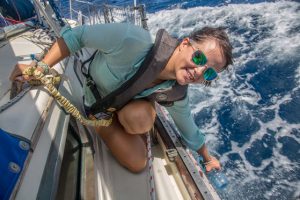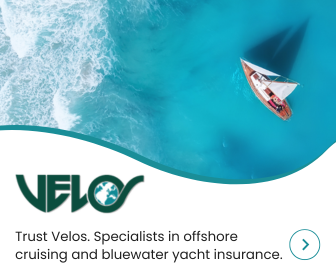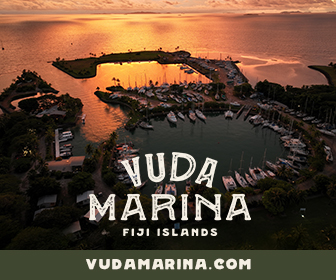Pacific Ocean Crossing: Collecting Water Samples on the Fly
Published 10 years ago, updated 6 years ago


By Jessica Newley
ASC Microplastics Adventurer
As my husband and I were preparing to set sail across the Pacific Ocean this Spring, I decided to look for ways to get involved in scientific research during our sail. I knew we were headed into remote, uncharted territories, where data could certainly be of use. As a result, I was stoked to find ASC and to have the opportunity to be a part of their microplastics project. If we were already doing sail to a far-flung place, I wanted to be a part of the larger picture and help tackle important issues like microplastics in the ocean at the same time.
Before we got our sailboat, Silent Sun, I spent a season working as a science educator onboard a 64-foot sailing vessel for Deep Green Wilderness in the Salish Sea. I lead high school students through their own scientific research projects, involving lots of water collections and data analysis at sea. I learned through this job that an important thing to know about working on the ocean, and particularly on sailboats, is that you are limited to the conditions around you. Which means basically everything—weather, the boat, the point of sail, the waves, the swell, the wind direction, speed, traffic, land masses—affects you and your actions. I quickly recalled this fact once we set sail on Silent Sun and set out to do my first water collection for ASC. Whenever we reached the mark of another couple hundred miles, it was often at night, there would be a nasty storm, we were going too fast and the conditions weren’t safe, or simply I was exhausted and had to wait until I felt up to doing another collection.
When Alex mentioned it would be best not to use a bucket to gather the collection water, I assumed I would figure out another way with no problem. Once we were out there, however, I realized that my options were pretty limited—I wasn’t going to be able to jump in (not safe when sailing and heaving-to was not an option), towing a rope and holding on was out of the question, I had no resources or time to create a non-plastic device to throw overboard and collect water for me… I was pretty much left with one option: attach myself to the boat, wait until we were heeled over enough to reach the water level and dip in for dear life. Ok, maybe it wasn’t that extreme, but sometimes while going 7kts it felt like it!
I’m excited to see the results from my samples—I felt like each collection I did was different from the last: one in the mouth of a very busy watershed, during a red tide, one after we saw the most trash traffic during the transit (a shoe, a plastic crate, etc.), one at the equator and one further away from any land mass I’ll ever be!
Overall, it was a really great experience. It made my days more interesting onboard Silent Sun and I felt good about being able to gather scientific data while at sea, particularly in very hard-to-reach places. I look forward to continuing collecting water samples along with my adventure throughout the South Pacific.
Learn more about the ASC Microplastics Project on their website [Broken Link] and the Field Notes blog.
Related to following destinations: French Polynesia, Marquesas, Mexico
Related to the following Cruising Resources: Environment, Pacific Crossing, Routing






